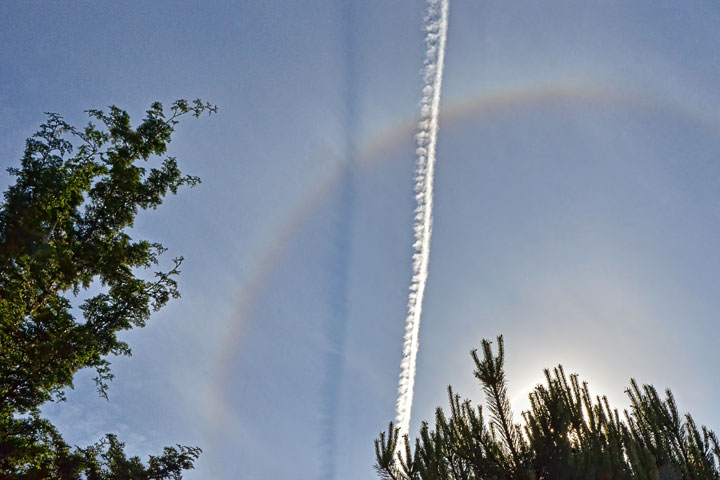We don’t have just one way of estimating the distance to an object; we have many. When objects are nearby, we use our stereo vision to judge spacial distribution. Beyond ten meters or so, we need other clues. If we know the characteristic size of something, such as a person, house, or tree, we judge distance by seeing how large it appears in the eye (its angular size): the smaller, the farther away. And if one object blocks another, that object is assumed to be closer to us.

Contrast decreases with distance through air
When we try to estimate the distance to objects of markedly variable size, such as mountains or clouds that might, or might not block one another, we use contrast. When seen through our atmosphere, the farther away an object is the lower its contrast: with distance, dark objects become lighter; with distant, light objects become darker. In the end with great distance, everything approaches the uniform brightness of the horizon sky.
Contrast works fairly well to estimate distances when one is looking at a solid object that doesn’t, itself, transmit light. But, how does one employ contrast to judge the distance to an inherently diaphanous object? What happens if one is looking at a veil of cirrus? The answer is: we usually get it wrong.
This morning, there was a veil of cirrus. Indeed, along with presenting a slightly streaky, milky sky, it produced a 22° halo. Then an airplane came by and left a well defined contrail. To our practiced eyes, the high contrast of the contrail makes it seem closer to us than the low contrast of the cirrus. Indeed, the contrail appears to block the view of the cirrus. Clearly, the contrail is closer and thus lower in the sky.
Yet, we would be wrong. The clue to the error is the shadow of the contrail on the cirrus. The cirrus has to be lower in the sky or the Sun would not be able to cast the shadow of the contrail onto the cirrus. The geometry of shadows tells all.
Alas, although an object’s contrast is usually a reliable measure of relative distance, our perceptions would miss this one. This diaphanous veil of cirrus is lower in the sky, and so closer to us, than is the contrail.


“This diaphanous veil of cirrus … “. Science and poetry!
To learn in an area new to me (at 72) is even more satisfying than when I was a young student.
I am looking at the sky over Kelowna with new eyes.
Thank you, Alistair.
Denise. Certainly there are some adolescents who enjoy learning out of an inherent fascination with the world around them. But, most are either merely appeasing their parents or optimizing job prospects. At 72, one learns strictly out of the sheer fascination with the enveloping world. This is pure learning done for the love of it.